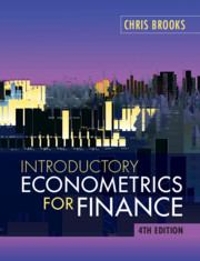Question
Payne Products had $1.6 million in sales revenues in the most recent year and expects sales growth to be 25% this year. Payne would like
Payne Products had $1.6 million in sales revenues in the most recent year and expects sales growth to be 25% this year. Payne would like to determine the effect of various current assets policies on its financial performance. Payne has $3 million of fixed assets and intends to keep its debt ratio at its historical level of 50%. Payne's debt interest rate is currently 8%. You are to evaluate three different current asset policies: (1) a restricted policy in which current assets are 45% of projected sales, (2) a moderate policy with 50% of sales tied up in current assets, and (3) a relaxed policy requiring current assets of 60% of sales. Earnings before interest and taxes are expected to be 14% of sales. Payne's tax rate is 25%.
-
What is the expected return on equity under each current asset level? Do not round intermediate calculations. Round your answers to two decimal places.
Restricted policy: % Moderate policy: % Relaxed policy: % -
In this problem, we have assumed that the level of expected sales is independent of current asset policy. Is this a valid assumption?
I. Yes, this is a valid assumption. The current asset policies followed by the firm mainly influence the level of fixed assets. II. Yes, this is a valid assumption. Sales are controlled only by the degree of marketing effort the firm uses, irrespective of the current asset policies it employs. III. No, this assumption would probably not be valid in a real world situation. A firm's current asset policies may have a significant effect on sales. IV. Yes, this assumption would probably be valid in a real world situation. A firm's current asset policies have no significant effect on sales. V. Yes, this is a valid assumption. The current asset policies followed by the firm mainly influence the level of long-term debt used by the firm.
-Select-IIIIIIIVVItem 4
-
How would the overall risk of the firm vary under each policy?
The restricted policy leads to a -Select-higherlowerItem 5 expected return as compared to moderate & relaxed policies. -Select-HigherLowerItem 6 current assets in a restricted policy would imply -Select-higherlowerItem 7 liquid assets; thus, the firm's ability to handle contingencies -Select-would bewouldn't beItem 8 impaired. -Select-HigherLowerItem 9 risk of inadequate liquidity would increase the firm's risk of insolvency and thus -Select-decreaseincreaseItem 10 its chance of failing to meet fixed charges. Conversely, a relaxed policy means -Select-higherlowerItem 11 liquid assets and -Select-higherlowerItem 12 total assets turnover ratio. In the relaxed policy, -Select-higherlowerItem 13 liquidity would decrease the firm's risk. The -Select-restrictedmoderaterelaxedItem 14 policy falls between the two extremes.
Step by Step Solution
There are 3 Steps involved in it
Step: 1

Get Instant Access to Expert-Tailored Solutions
See step-by-step solutions with expert insights and AI powered tools for academic success
Step: 2

Step: 3

Ace Your Homework with AI
Get the answers you need in no time with our AI-driven, step-by-step assistance
Get Started


